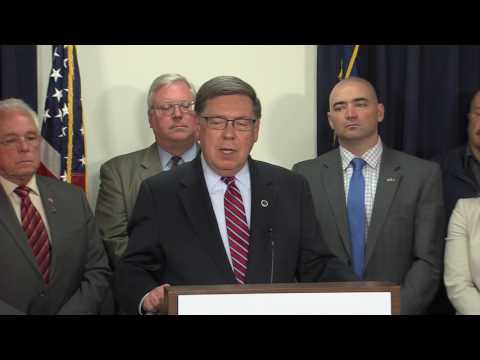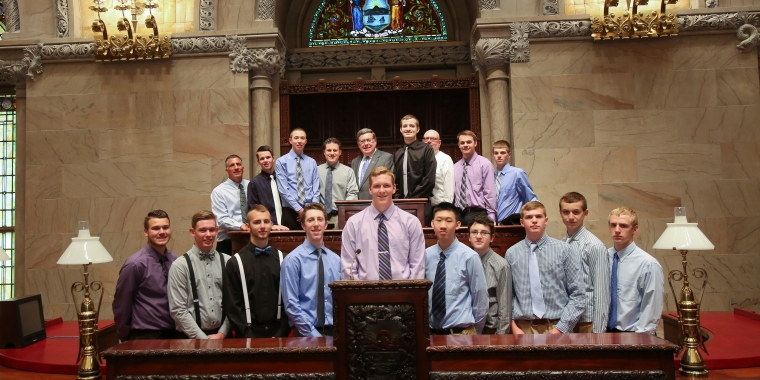
Seward: Senate Delivers For Farmers
State Senator James L. Seward, a member of the Senate Agriculture Committee, today said the state budget includes $30 million in additional funding for New York’s dairy farmers. The typical dairy farm should see a cash award of $7,500, with a cap of $15,000, Seward said.
"We fought for the aid for the state's dairy farmers because they're seeing historically low milk prices and jumping expenses, like fuel, energy and taxes," Seward said. "Despite some objections of the the administration, we prevailed in winning some genuine help for our state's dairy farmers."
Seward also credited the leadership of Sen. Catherine Young, chairman of the Senate Agriculture Committee for the success.
"What Senator Seward did was nothing short of tremendous," said Schoharie Farm Bureau President John Radliff. "His travels this fall, listening to the farmers, hearing the problems, and recognizing that dairy farming is critical to his district showed the leadership in the senate that helped us get the $30 million. And that investment is going to be a life preserver for a lot of farmers. I am greatly appreciative, not just for myself but for all the farmers in the district."
"The state senate is truly stepping up to help solve the dairy crisis," said New York Farm Bureau President John Lincoln. "Our farmers are struggling with a three-year milk price drop and energy prices that have tripled in the past five years. Without help, many family farmers will go out of business, which will be a major blow to the upstate rural economy. We thank Senate Majority Leader Bruno, Senator Young and the entire Senate Majority for their support of agriculture."
The plan enacted by the legislature establishes a new dairy assistance program within the New York State Department of Agriculture. The program, which is similar to an initiative used in the State of Vermont, will pay eligible farmers the difference between target prices established by the agriculture commissioner and the combined northeast federal order statistical uniform price, plus the amount of the milk income loss contract X payment rate on a per-hundredweight basis.
Dairy producers will receive payments from the state in the form of a separate check based on pounds of milk produced during the 2006 calendar year. These payments will be made within thirty days of the proposal's enactment.
Dairy farming contributes $3 billion to the state’s economy and is a vital part of the fabric of the state’s rural communities, generating tens of thousands of jobs both on and off farms, and productively employing millions of acres of farmland. Unfortunately, high fuel and feed costs, labor shortages and flooding have created a "perfect storm" scenario that has had a devastating economic impact on many milk producers. In addition, low milk prices, an outdated price control system administered by the United States Department of Agriculture (USDA), and the escalating cost of running a family farm have resulted in unprecedented losses for dairy farms across the state.
"We worked with advocates like Assemblyman Bill Magee to get an agreement that will provide some much needed help for our dairy farmers," Seward said.
-30-



